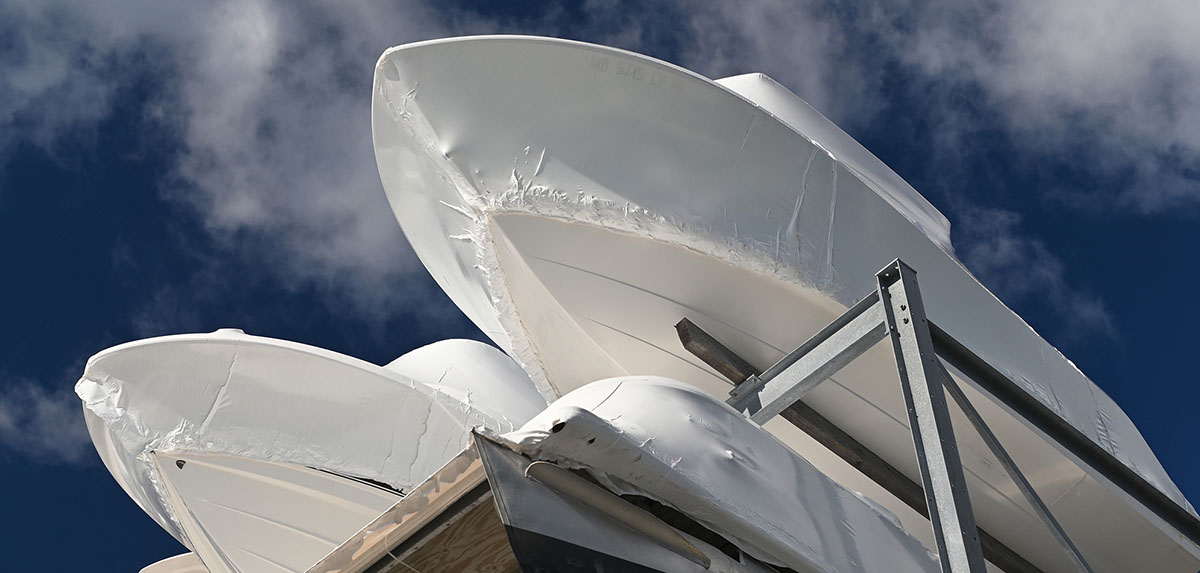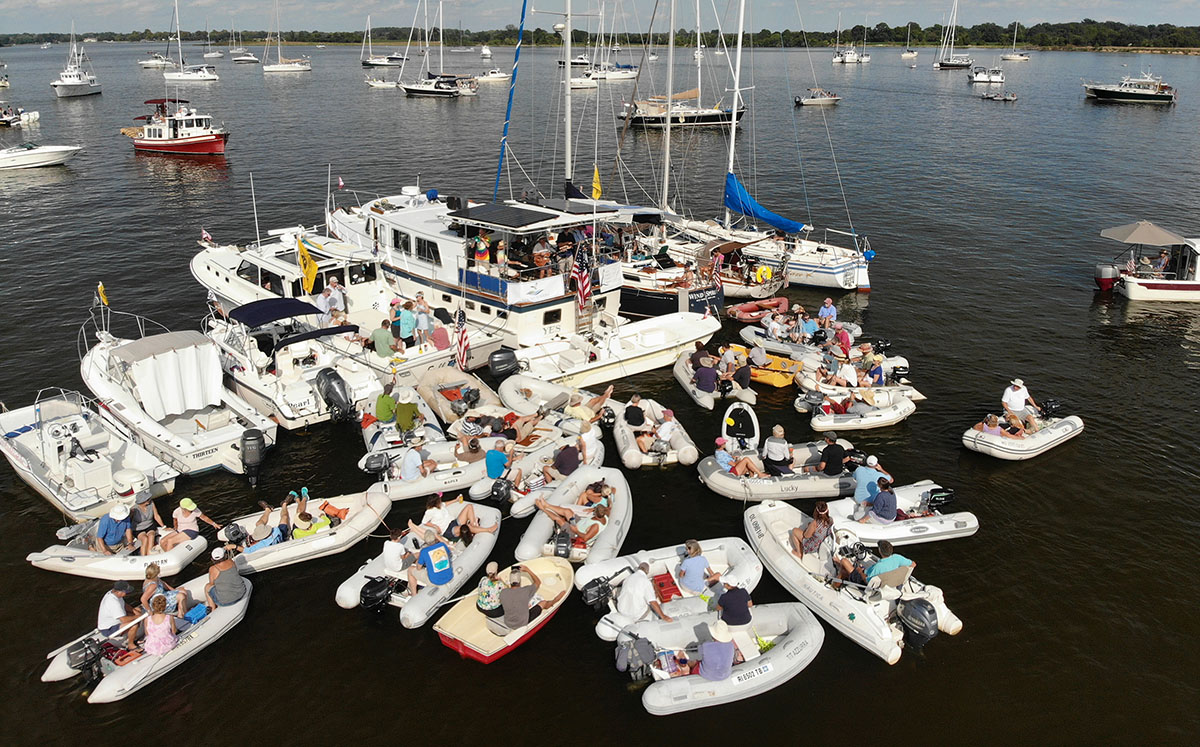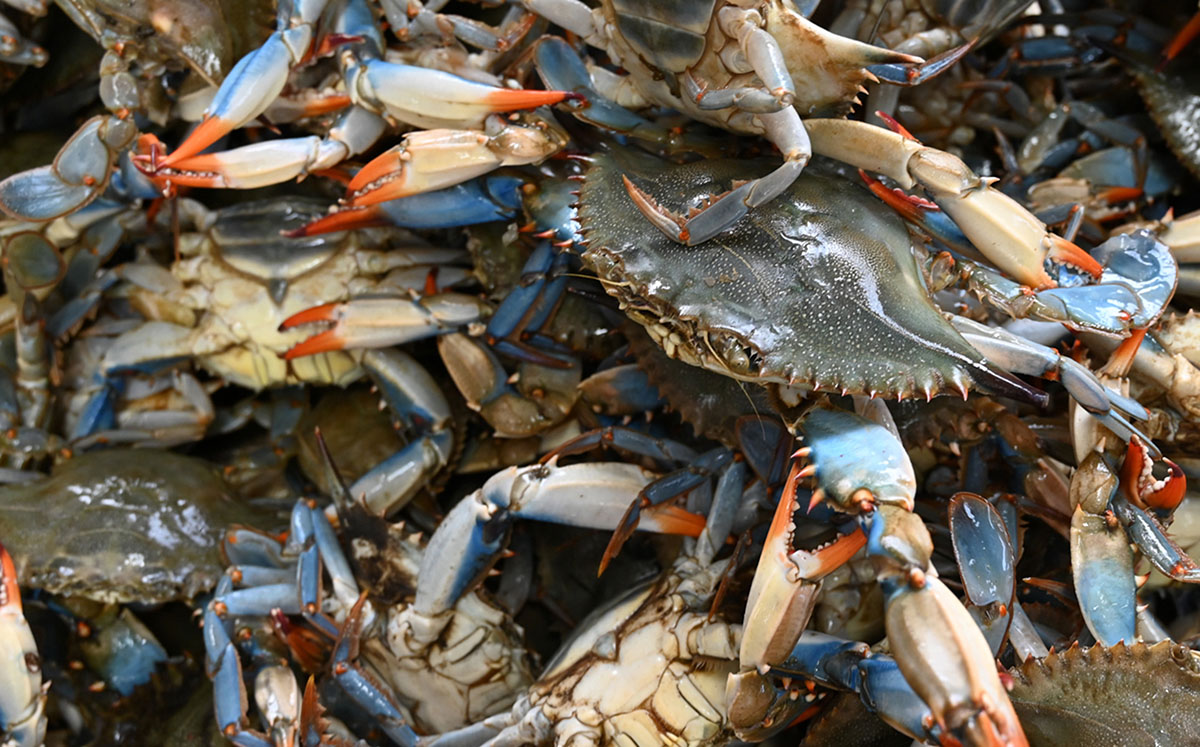Boats on the Bay: Shrinking the Impacts
June 2022 • Volume 21, Number 1
A Cover Story
By Wendy Mitman Clarke
In Maryland each autumn, tens of thousands of boats are covered with shrink wrap, a non-biodegradable, heavy-duty plastic that’s heat-shrunk onto a framework of nylon strapping tape, sealing boats from the elements. Typically, it’s thrown away in spring, making it as much a single-use plastic as water bottles, cutlery, or straws. And, while tons of it are generated in Maryland and nationally—the vast majority ending up in landfills or incinerators—efforts toward recycling and changing boat owners’ behavior around using it are complicated by a dearth of research and firm data, the volatile global economics of recycling, and the basic physical difficulties of handling the material.
Keeping it Clean
This summer, 13 waterbodies in Anne Arundel County will join the Chester River and its tributaries, Herring Bay, and the northern Coastal Bays in being designated a No Discharge Zone, meaning that no sewage of any type from boats may be flushed overboard there. What are these zones, how and why are they established, and how do they work? We’ll look at the science and policy behind them.
Keeping the Crabs Cooking
Few things say Maryland better than catching a “mess o’ crabs,” throwing them into a steamer, then spreading them on a paper-covered picnic table for an afternoon feast with friends and family. But for the state’s crab processors, life is never so simple when preparing the local delicacy for market, and this is where the work of Maryland Sea Grant Extension Seafood Technology Specialist Cathy Liu is critically important.





![[Maryland Sea Grant]](/images/uploads/siteimages/CQ/MD-Logo.png)